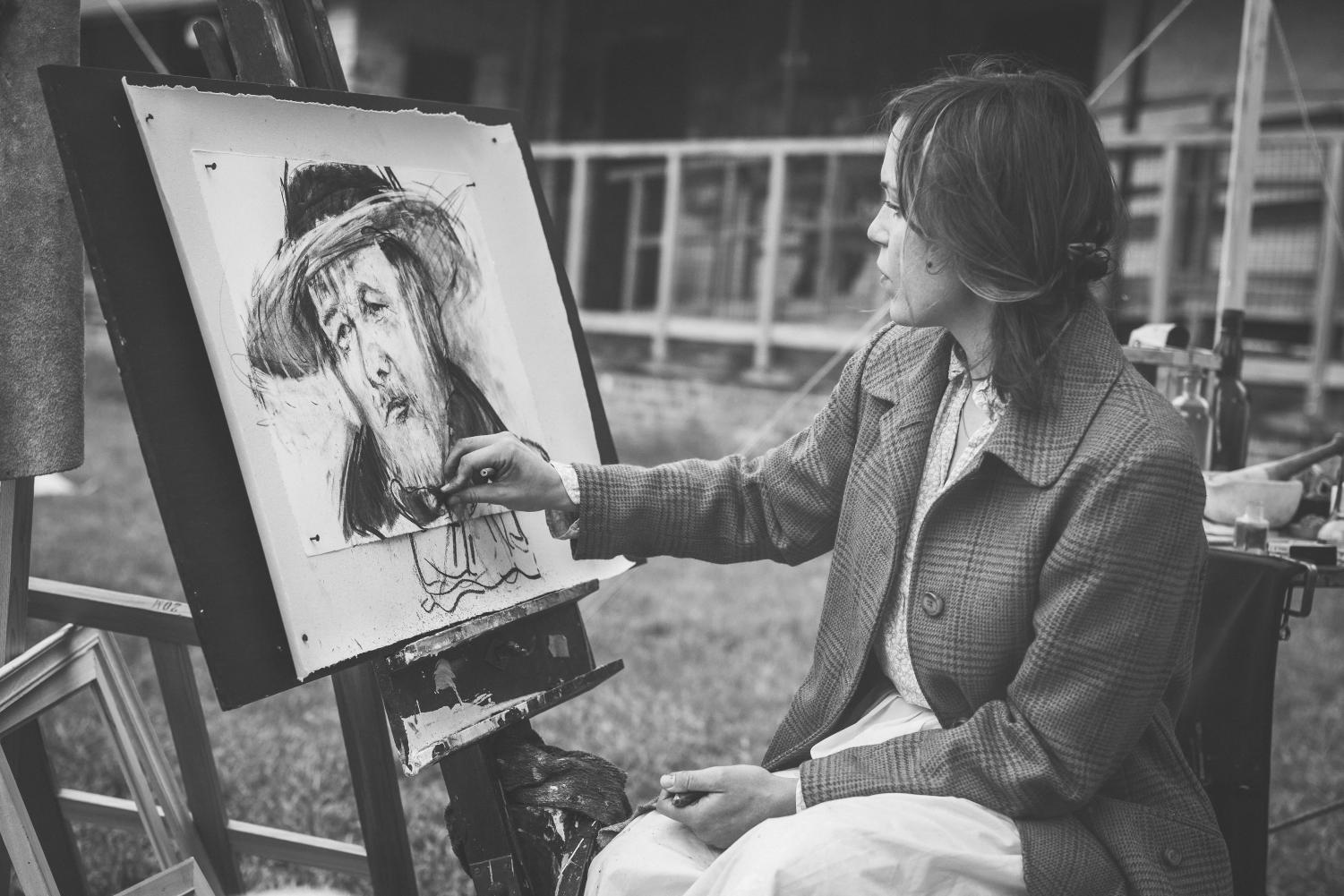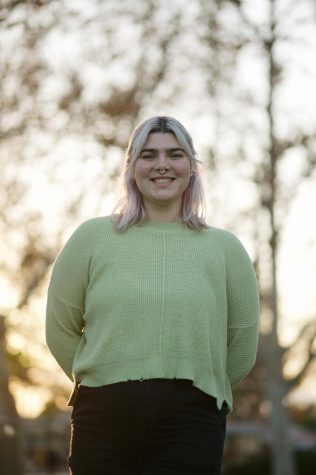At a private Christian institution like Biola, there are certain restrictions on artistic freedom as the university recommends that creative projects align with Biola’s code of conduct. Students within the Department of Art are not allowed to draw fully nude models as a part of adhering to Biola’s community standards. This policy inhibits the students’ studies of the human body, and, because of the restrictions, may also cause them to wonder if they should consider nudity in art voyeuristic or pornographic.
BIOLA’S COMMUNITY STANDARDS
Biola’s community standards are shaped by what is considered to be Biblical instruction, and all students who attend the university are expected to function within those guidelines. The community standards enumerate the university’s policies, including restrictions on perceiving the human body in depictions of pornography and inappropriate clothing.
The Biola student handbook also comments on how the body is displayed with clothing and addresses their policy in the “Dress Standard.” The handbook says, “Certainly, we expect our community to abstain from clothing that might be reasonably received as tasteless, hostile, slanderous, provocative, exaggerated or persistent cross-dressing, and/or culturally appropriated in ways that might be offensive.”
Regarding nudity, the Biola student handbook touches on pornography saying, “University policy forbids exhibition, possession, or distribution of material or representations deemed to be obscene or contrary to the moral standards and/or mission of the University, including, but not limited to, pornography.”
It is unclear, however, if nudity in art could be looped into this category.
‘HEALTHY ENVIRONMENT OF ARTMAKING’
The community standards mentioned by the student handbook provide a social structure in how students present themselves and perceive others. Yet, students in the art department wonder if their projects need to reflect the same standards or if their subjects need to abide by the same rules. The ambiguity in the student handbook ignites insecurity for the art students who fear the intentions of their work may be mistaken.
These policies are not in the control of the art department alone; however, the art department is required to abide by these rules. Professors have agreed to these guidelines for the display of the students’ work while keeping their artistic integrity in the classroom.
“In classes, we really try to protect as much space as possible for students to work with a wide range of subject matter,” art professor Jonathan Puls said in an email. “This is essential to a healthy environment of artmaking. Things sometimes become more challenging in the context of public exhibitions, where the artist has responsibilities not only for the expression of their ideas, but to the impacts/effects these will have on audiences. As students move toward exhibitions of their work, we try to mentor them through these issues.”
NUDITY IN ART
The famous artist Michelangelo said, “What spirit is so empty and blind, that it cannot recognize the fact that the foot is more noble than the shoe, and skin more beautiful than the garment with which it is clothed?” For centuries, displays of the naked body have been essential in the advancement of artistic skill.
Nudity in art has been a topic of debate for many years, as many people are not convinced that nude models are necessary for studying the human body. Nude life drawings, however, are an essential part of learning how to communicate the anatomy of the body: how muscles, bones, and skin move and are at rest.
According to artist Brian K. Yoder’s Eugene Figure Drawing blog, “Some people feel that the nude form is something that should be hidden away both in art and the artist’s classroom … such people frequently attempt to stop others from viewing or learning from the human form, thereby infringing on their rights to create and consume art as they wish.”
Puls noted that not all images of the body are designed for the same purpose.
“Most cultures are able to maintain a distinction between images/texts that are simply meant to provoke the prurient interest and those meant to cultivate a more complex vision of the human body,” Puls said in the email. “Hopefully people have an opportunity to see images of the human body that are ennobling and connected to reality, and not just about consumption (we use bodies in pornography, advertising, etc., images based on provoking desire that is unfulfillable, these images tend to reduce our sense of humanity).”
ART STUDENTS’ VIEWPOINT
Many Biola students have expressed their desire to expand their knowledge of the human body in the classroom. Especially when an artist specializes in figure studies, their work is inhibited by Biola’s limitations.
“Biola values modesty, and I respect that as a policy,” senior art major Molly Pederson said. “But in academic settings where a complex understanding of human anatomy is required, censorship of nudity is an academic disruption. As a student and artist, my goal is to understand the whole of a person’s anatomy to honor the beauty I find there. When the figure is censored, it’s not only disruptive to my work but devalues my calling as a figurative artist.”
The reasons for this policy have also sparked frustration since the artists wish to be trusted with their intentions for their desired practices. Biola’s censorship of nudity in the art department suggests that it should not be produced or consumed entirely.
“Biola’s censorship protocols affect my ability to fully explore certain subjects in my practice and exhibition work,” senior art major Beatrice McCormick said. “I could create any work of my choosing in private. However, when it comes to certain classes, professors, and exhibition opportunities, it’s my understanding that nudity is not allowed, explicitly sexual, or not in nature. Nor are any other values that go against Biola’s expansive and restricting code of conduct allowed.”
Prohibiting nude drawings creates the assumption that the university finds them obscene or provocative. Some art students find this disrespectful as they wish to be trusted in their intentions, and do not find nude life drawings pornographic in any way.
“This limitation imposed on art students within their educational structures is the product of a university mindset that assumes immaturity of both the intent of the student and the reception of the audience,” McCormick said.
WHAT TO PUT INTO PRACTICE
Yoder’s thoughts on nude drawings pose an intellectual argument for why they are beneficial to artistic expression.
“Using nudity, the artist can show human beings in a way that focuses the attention on the figure and not irrelevant matters,” Yoder said. “The ability of the artist to focus attention on the important aspects of what is going on and to remove distractions from this subject of focus is a common reason for the choice of nude figures as well.”
In a visual medium, all explanatory descriptions about the subject are limited to what is visually perceived. The clothing a subject wears is an integral part of what the piece is trying to convey. So if clothing is required for the artists’ subjects, there are possible limitations on the artist’s intentions for their projects. Some artists may choose to draw clothing to express their subjects’ interests, environment or time period. Others may wish to make their subjects more universal.
“This limitation manifests itself prominently in figure studies classes, where male models have to wear briefs, and models who are women have to wear both underwear and a bra,” McCormick said. “The goal of the study of the full human form isn’t complete when genitalia and female breasts are not allowed to be visible in class sessions or anywhere else.”
ART PROFESSOR’S VIEWPOINT
Professors have attempted to accommodate studying the anatomy of the human body with the university’s limitations on what can be shown.
“The human body is a gift from God, it is an essential part of our humanity, so essential that Jesus took on flesh to become fully human with us,” Puls said in the email. “So I encourage my students to study the structure, design, and expressive potential of the human body. I encourage them to be specific, not thinking about the body as an abstraction, but as our individual lived experience.”
Puls noted the varied emotions artists experience while attempting to properly depict the human body in a piece of artwork.
“I encourage them to deal with all the complex feelings and thoughts that come with looking at another person and trying to represent them,” Puls said in the email. “All of these feelings and responses are simply part of us, it is critical that we bring them into the light so they can be reconciled to Jesus as well.”
Puls pointed to drawings of both clothed and nude models as ways of celebrating God’s creation.
“I have spent much time drawing unclothed and clothed models, learning human anatomy, and cultivating an admiration for the structure and expressiveness of particular bodies,” Puls said. “My sense of appreciation and wonder and the human body as part of God’s creation has only increased over time.”
CREATIVE FREEDOM
Students in the art department are encouraged to take on the challenge of creative freedom within Biola’s certain limitations and develop their own ethic in approaching the human body. However, the students feel as though there is still a misconception of what they actually intend for their work.
“The logic of this protocol originates in stubborn and consistent sexualization of the human body, even when the context the nude form resides in has no presence of sexuality, such as a figure study class,” McCormick said. “Through this rule, Biola has asserted that the human body is primarily, or at least constantly, sexual in nature, and does not leave room for context or nuance. Biola also assumes the immaturity of its art students, seeming to not trust them to approach figure studies seriously if the models were allowed to be nude.”
Biola students in the art department should be allowed to study their subjects at their own discretion. Erotic art and pornography have entirely different intentions than nude life drawings. Nudity in art expresses subjects without the limitations of clothing and allows an artist to study anatomy for the purpose of advancing their artistic accuracy. Art professors at Biola acknowledge that nude life drawings have been a standard part of education in the fine arts for centuries. It would be immature to deem such a dignifying and consensual process as inappropriate.








